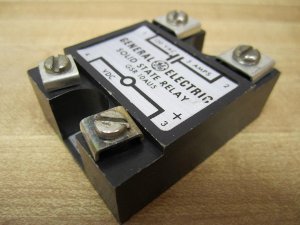Solid State Relays
A solid state relay is a device that controls voltage to allow or prevent a voltage or current from passing through a circuit without using any moving parts. Solid state relays are commonly found in control systems that use large amounts of power and must be switched on and off on a regular basis. Solid state relays can be used for a wide variety of purposes and can be constructed in different ways.
How a Solid State Relay Works
Solid state relays consist of a control switch that produces an electrical signal, an input voltage or current, and an output voltage or current. Solid state relays must be built in a way that allows voltage or current to travel from the input to the control switch without the two circuits actually touching each other. To accomplish this, most solid state relays have a control switch that uses an LED (Light Emitting Diode) to produce a light beam that a photo-voltaic output diode absorbs. The current from this diode is then used to switch an electrical load from on to off or vice versa.
Applications
Solid state relays can be used in any high powered electrical system that must be turned on or off on a routine basis. For example, power supply lines that are connected from a utility company to a residence uses a solid state relay to turn the customer’s power on and off, depending on whether he/she has paid his/her bill on time. Solid state relays are also used in factory grade machinery to turn large drills, rotors, and other devices on and off.
Advantages
Solid state relays are advantageous because they can control large amounts of voltage with a small amount of electricity. Solid state relays are relatively small and can be adjusted to a wide variety of devices. Additionally, solid state relays can be controlled either remotely or via a physical switch.


Comments - No Responses to “Solid State Relays”
Sorry but comments are closed at this time.